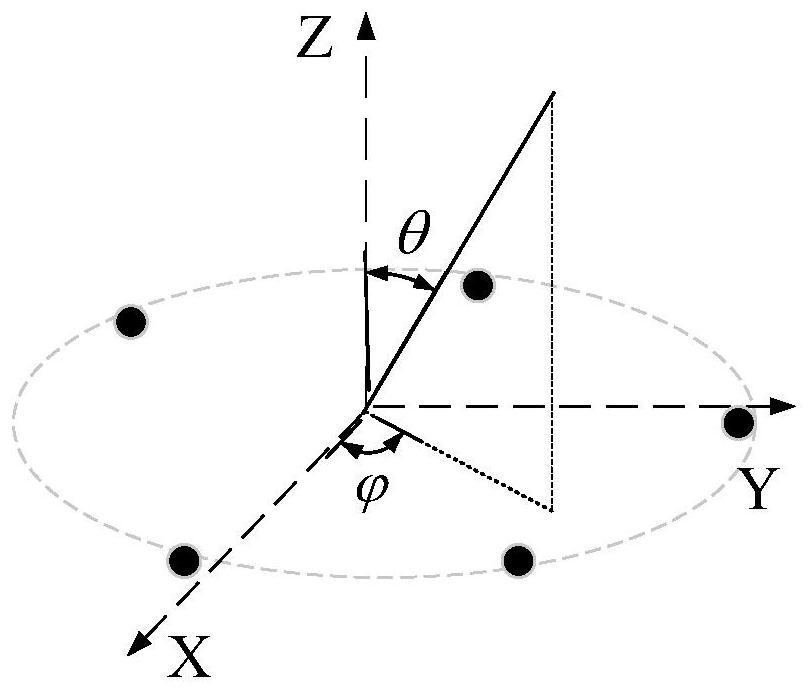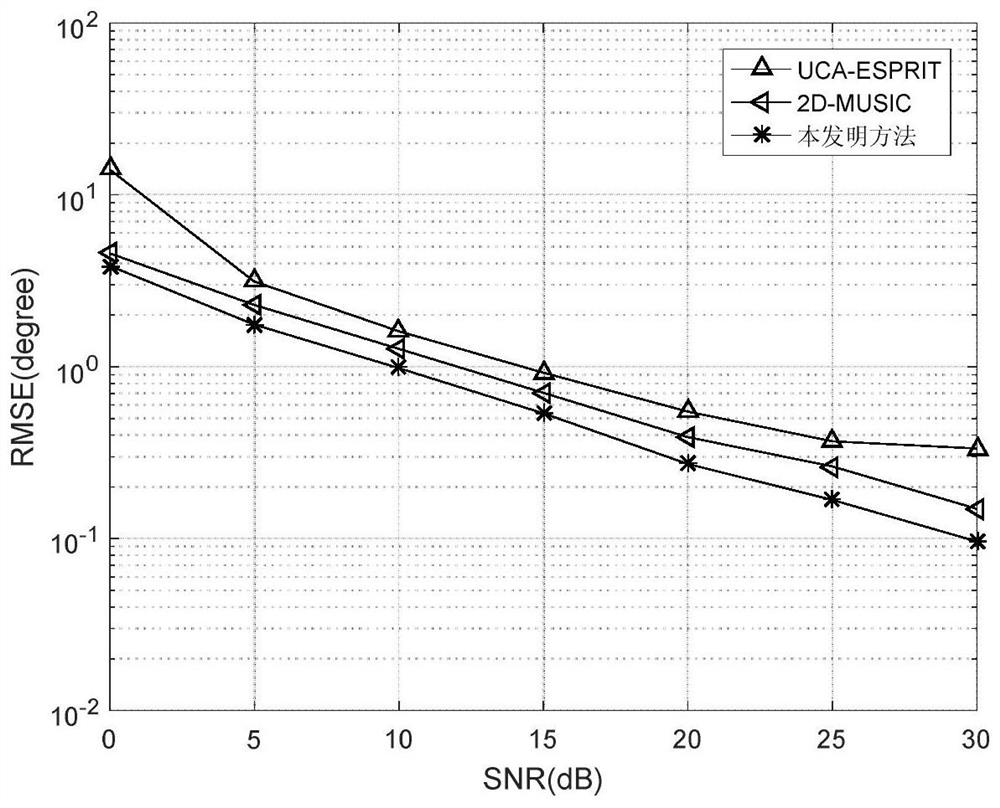Circular array DOA estimation method based on subspace orthogonal compensation
A quadrature-compensated, subspace technique used in direction finders using radio waves, radio wave direction/bias determination systems, etc.
- Summary
- Abstract
- Description
- Claims
- Application Information
AI Technical Summary
Problems solved by technology
Method used
Image
Examples
Embodiment Construction
[0040] Such as figure 1 As shown, a circular array DOA estimation method based on subspace orthogonal compensation includes the following steps:
[0041] Step 1: The circular array receives the radiation source signal, and samples the received signal, consider as figure 2 In the direction finding scenario shown, the received signal is expressed as
[0042] x(t)=As(t)+n(t)
[0043] in is the direction matrix, s(t)=[s 1 (t),...,s K (t)] K is the signal source vector, n(t) is zero-mean complex Gaussian white noise. The steering vector of the array is
[0044]
[0045] where gamma n =2πn / N(n=0,1,…,N-1), λ is the wavelength, r is the radius, are the incident elevation angle and azimuth angle of the kth (k=1,2,…,K) source, respectively.
[0046] Step 2: Perform beamspace transformation on the received data and use UCA-ESPRIT algorithm to estimate rough DOA
[0047] Step 3: Construct the covariance matrix without beam transformation for the received data vector
...
PUM
 Login to View More
Login to View More Abstract
Description
Claims
Application Information
 Login to View More
Login to View More - R&D
- Intellectual Property
- Life Sciences
- Materials
- Tech Scout
- Unparalleled Data Quality
- Higher Quality Content
- 60% Fewer Hallucinations
Browse by: Latest US Patents, China's latest patents, Technical Efficacy Thesaurus, Application Domain, Technology Topic, Popular Technical Reports.
© 2025 PatSnap. All rights reserved.Legal|Privacy policy|Modern Slavery Act Transparency Statement|Sitemap|About US| Contact US: help@patsnap.com



